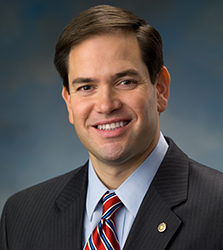
GOP Nomination Calendar Presents Twists and Turns
Winning the Republican nomination for president has one overriding number: 1,237. That’s the number of delegates needed to emerge as the GOP nominee. The question is, who (if anyone) has a path to obtain that number of delegates?
Over at FiveThirtyEight.com, David Wasserman offers an analysis of how the process could unfold given the differing rules each state has for how it awards delegates:
Beware A GOP Calendar Front-Loaded With States Friendly To Trump And Cruz
In a few weeks’ time, it’s possible that Donald Trump and Ted Cruz will steamroll their way through Iowa, New Hampshire and South Carolina and dominate the so-called “SEC Primary” — the collection of 13 mostly Southern states that will vote on March 1 — horrifying many GOP elected officials and depriving any other candidate of a night to celebrate.
Yet even if that happens, it’s still possible that Marco Rubio (or another more establishment-friendly candidate) could end up with the nomination, thanks to quirks of the GOP’s complex delegate math.
The GOP’s primary calendar is surprisingly front-loaded with states friendly to insurgents like Trump and Cruz. But because of Republican National Committee rules, all but one of these states will award their delegates on a proportional basis, intentionally making it difficult for any one candidate to build a durable or commanding lead.
Instead, Florida and Ohio, which tend to support more conventional Republicans, are likelier to shape the race’s destiny than Iowa or South Carolina. That’s because they will award a whopping 99 and 72 delegates, respectively, in huge winner-take-all primaries on March 15.
The analysis focuses on Texas Sen. Ted Cruz, Florida Sen. Marco Rubio, and businessman Donald Trump, concluding that “[a]lthough there is still plenty of time for Trump or Cruz to falter or for another candidate to rival Rubio for the mantle of ‘establishment’ front-runner, for now, this is functionally a three-man race.” A few of the more interesting observations in the piece include:
1. Each top GOP contender has a very different path to the nomination, but keep an eye on where those paths converge. Rubio’s ideal path would rely heavily on coastal, New England, Middle Atlantic and Great Lakes states. Cruz’s would rely heavily on the Deep South, the conservative heartland and Texas. Trump’s would likely depend on a broader coalition of Southern, Midwestern and Northeast industrial states.
However, we estimate that all three candidates’ routes run through the winner-take-all bellwethers of Florida, Ohio and Arizona — all of which contain natural elements of support for each contender. If one candidate were to win both Florida and Ohio and claim their jackpot of 171 delegates, it would be extremely difficult for any other candidate to overtake him. Meanwhile, a Florida/Ohio split would almost surely prolong the race into April.
2. Beware an early, modest lead for Trump or Cruz. Our estimates show that Cruz would need 555 delegates heading into the March 15 primaries to keep pace for the nomination, and Trump would need 469. However, Rubio would need only 371. In other words, the GOP calendar is front-loaded with insurgent-friendly states. Although Rubio can’t afford to get clobbered early by missing thresholds in SEC states (see No. 3 below), he merely needs to stay within striking distance.
3. Delegate “thresholds” and “triggers” can make or break candidacies. Most proportional states require candidates to hit a minimum threshold of support to win delegates. For example, if Rubio were to receive 21 percent of the vote in Texas, he would win nine of Texas’s 44 at-large delegates. But if Rubio were to receive 19 percent, he would receive zero, thanks to Texas’s 20 percent threshold.
The article, which provides an excellent overview of how each of these three campaigns has a path towards the nomination, is a must-read for anyone who wants to understand what is likely to be a highly competitive contest for the Republican nomination.



